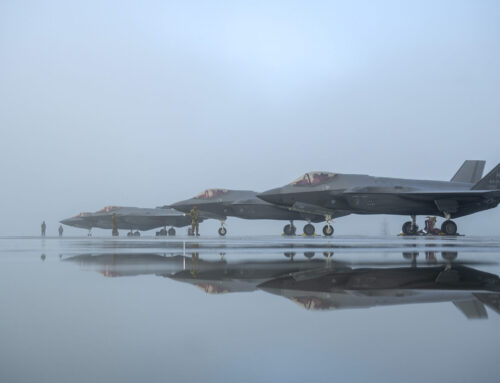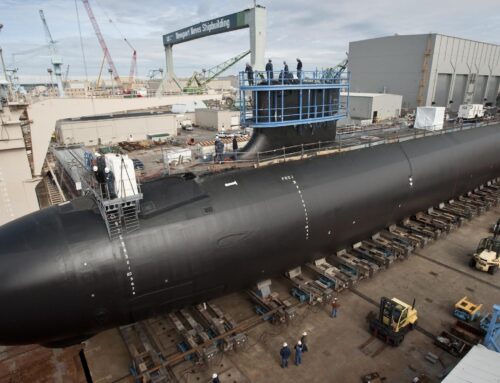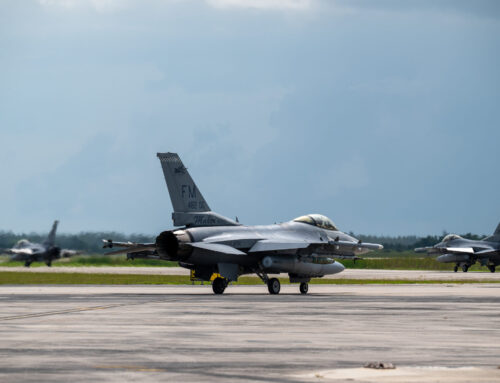Anduril intends to develop new space surveillance satellites, using its AI-powered Lattice software. (Illustration: Anduril)
WASHINGTON — Defense startup Anduril Industries, perhaps most known for its artificial intelligence applications for drone warfare, is setting its sights farther up — using its own funds to develop new satellites for monitoring the heavens.
In an announcement released today, Anduril’s Senior Vice President of Space and Engineering Gokul Subramanian said the company intends for the satellites to be launched by the end of 2025 — with the Space Force clearly the target market.
Top brass from both the Space Force and US Space Command repeatedly have said that improved space domain awareness is a first-order priority.
Anduril is looking to design multiple payloads, all based on its AI-powered Lattice software, the same platform used to power the counter-drone capabilities currently in use under the company’s nearly $1 billion contract with Special Operations Command.
“Anduril will design, manufacture, and integrate modular mission payloads designed to enable unique mission requirements, leveraging our extensive expertise across imaging, electronic warfare, command and control, and mission autonomy. These payloads will provide warfighters with real-time data exploitation, autonomous coordination of satellites, and resilient communication capabilities,” Subramanian said.
The first launch “will serve as a testbed for maturation of multiple Anduril and third party payloads which we will be announcing in the coming months,” he added.
Anduril quietly has been building experience in the space domain awareness arena.
Subramanian explained that the company has “multiple hardware and software payloads already deployed on orbit,” and is “delivering advanced systems that range from on-orbit edge processing of sensor data to resilient satellite command and control.”
Anduril’s new satellites also will build off of work in November 2022 to demonstrate the application of its Lattice software for communications with the radars and telescopes making up the military’s Space Surveillance Network. “This expeditionary effort required multiple unique, site-specific software integrations that transformed the legacy SSN sites from a legacy system of communication to a resilient, high speed and integrated operational mesh network,” the company said in a July 2023 press release.
In addition, the release said, Anduril’s mesh network was used to restore the communications system of the Ground-Based Electro-Optical Deep Space Surveillance (GEODSS) System site in Maui, Hawaii, following a severe Kona Low storm.
GEODSS is a network of telescopes — three at each of three sites in the US and at US Pacific Command — operated by Space Force Delta 2 as part of the overarching Space Surveillance Network.
The company also has extensive experience in developing cameras and infrared sensor systems for its drones and counter-drone systems, having announced in February a new family of passive, long-range sensors, called Iris, for missions such as “infrared search and track,” missile warning, and targeting.











